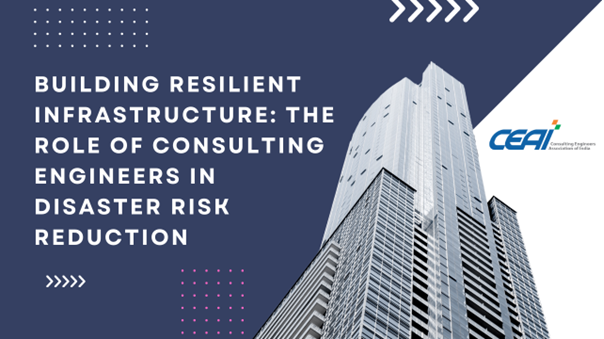
Infrastructure is essential for modern society, providing us with critical services such as transportation, power, water supply, and communications. However, as natural disasters become more frequent and severe, it has become clear that infrastructure is vulnerable to damage and disruption caused by these events. This is where consulting engineers play a crucial role in disaster risk reduction by designing and building resilient infrastructure.
The Importance of Resilient Infrastructure
Resilient infrastructure refers to infrastructure systems that are designed to withstand and quickly recover from natural disasters. This means that they can continue functioning during and after a disaster, reducing the impact on people’s lives and the economy. Building resilient infrastructure requires a multi-disciplinary approach that involves understanding the hazards, assessing the risks, and implementing measures to reduce the risks.
The Role of Consulting Engineers in Disaster Risk Reduction
Consulting engineers are uniquely qualified to lead the process of building resilient infrastructure due to their technical expertise and experience in infrastructure design and construction. They are involved in all stages of infrastructure development, from planning to construction and maintenance, and can incorporate risk reduction measures into their designs.

Incorporating Hazard Analysis and Risk Assessment in Infrastructure Design
Consulting engineers can use their knowledge of natural hazards to inform infrastructure design by analyzing historical data and conducting risk assessments to determine the likelihood and potential impact of different hazards. This information can then be used to inform design decisions, such as selecting appropriate materials and designing structures that can withstand the expected hazard.
Redundancy and Resilience in Infrastructure Design
Consulting engineers can also contribute to disaster risk reduction by incorporating redundancy and resilience into infrastructure design. Redundancy refers to the provision of backup systems or components that can take over if the primary system fails. Resilience refers to the ability of the infrastructure system to adapt to changing conditions and recover quickly from disruptions. These measures can ensure that infrastructure remains functional during and after a disaster.
Promoting Sustainable Infrastructure Design
Consulting engineers can also contribute to disaster risk reduction by promoting sustainable infrastructure design. Sustainable infrastructure refers to infrastructure systems that meet the needs of the present without compromising the ability of future generations to meet their own needs. Sustainable infrastructure can reduce the impact of disasters on the environment and reduce the vulnerability of communities to future disasters.

Technical Assistance and Capacity Building for Communities
In addition to designing resilient infrastructure, consulting engineers can provide technical assistance and capacity building to communities. They can work with communities to identify their needs and design infrastructure that meets those needs. They can also provide training to local communities on how to maintain and repair infrastructure to ensure that it remains resilient and functional during and after a disaster.
Ongoing Maintenance and Improvement of Resilient Infrastructure
Building resilient infrastructure is an ongoing process that requires collaboration and commitment. Consulting engineers can play a critical role in this process by conducting regular inspections and maintenance of infrastructure systems to identify and address vulnerabilities before they become a problem. They can also conduct post-disaster assessments to identify areas for improvement and incorporate lessons learned into future infrastructure designs.

Conclusion
In conclusion, consulting engineers have a critical role to play in disaster risk reduction by designing and building resilient infrastructure. By incorporating risk reduction measures into their designs, promoting sustainable infrastructure design, providing technical assistance and capacity building to communities, and conducting ongoing maintenance and improvement, consulting engineers can reduce the impact of disasters on people’s lives and the economy. Building resilient infrastructure is an ongoing process that requires collaboration and commitment, but with the help of consulting engineers, we can build a more resilient future.
